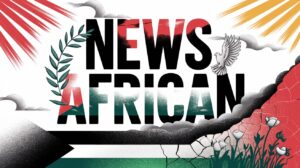Tanzania’s geographical location and conflict mediation experience make it well placed to bridge the region’s various peace efforts.
Tanzania is a member of both the East and Southern African regional organisations currently trying to resolve the conflict in east Democratic Republic of the Congo (DRC). Although often regarded as affiliating more with the south, Tanzania could use its history of conflict mediation – and its geographical location – to align the two blocs’ priorities on the crisis.
After the DRC joined the East African Community (EAC) in 2022, the EAC-led Nairobi Process deployed the East African Community Regional Force (EACRF) to east DRC. Tanzania participated in the Nairobi Process and helped finance it, but didn’t contribute troops. At the time, it had already sent soldiers and logistical support to the Southern African Development Community (SADC) mission in Mozambique.
When the DRC declined to extend EACRF’s mandate due to its inability to rein in the Rwanda-backed M23 rebel group, SADC stepped in. It deployed the SADC Mission in the DRC (SAMIDRC) in December 2023, giving it an offensive mandate against the insurgents.
Tanzania, along with Malawi and South Africa, committed troops to the mission – reviving concerns that Tanzania aligned more with Southern than East Africa on regional matters. However, the country has stressed its commitment to both SADC and the EAC efforts in the DRC.
Tanzania has long been a pivotal actor in resolving conflicts in the Great Lakes region. It facilitated the Rwandan peace talks, which led to the Arusha Accords that preceded the 1994 genocide. It played a similar role in the Burundi peace process during the 2000s, contributing significantly to another set of agreements (also called the Arusha Accords).
Tanzania was also a leading supporter of Southern African nations during their liberation struggles, serving as a sanctuary and strategic base for key figures in Mozambique, Zimbabwe, Angola and South Africa’s independence movements. Tanzania provided them with logistical support and moral backing, highlighting the country’s dedication to the cause of African unity.
However, despite these notable efforts, the perception that Tanzania gravitates more towards the south has grown. Can the country reconcile this view with its role in East Africa’s peace efforts? And can it use its membership of both SADC and the EAC to mediate their different approaches?
While both blocs seek to stabilise east DRC, SADC targets inter-state issues between the DRC and Rwanda, whereas the EAC’s Nairobi Process focuses on the broader conflict involving various armed groups. Although the approaches are complementary, regional organisations need to work together on a long-term solution to the conflict.
In August, Tanzanian President Samia Suluhu Hassan was appointed Chair of the SADC Troika on Politics, Defence and Security Cooperation. This position could enhance the country’s role in regional stability, creating a bridge between East and Southern African approaches in east DRC.
In July, Tanzania hosted a retreat of East African Community and foreign affairs ministers in Zanzibar to discuss regional integration and security, including the east DRC crisis. The meeting concluded that a political settlement was the most viable path to lasting peace and security in the region. It recommended convening an EAC heads of state summit to reinvigorate the Nairobi Process, working in tandem with the Luanda Process.
The Luanda Process – led by Angolan President João Lourenço on behalf of the African Union – recently held inter-ministerial dialogues between Rwanda and the DRC. Despite brokering several ceasefires and agreements, the initiative faces significant hurdles, and fighting between M23 and the Congolese army continues. While the Luanda Process works through bilateral mechanisms, a revitalised Nairobi Process could involve more countries.
Tanzania’s decision not to contribute troops to the EACRF was strategic. Foreign ministry officials told ISS Today that a diplomatic fallout with Rwanda in 2013 over proposed negotiations with the Democratic Forces for the Liberation of Rwanda (FDLR) – a Hutu rebel group active in east DRC – informed its decision to remain neutral as DRC-Rwanda tensions grew.
This stance served Tanzania well, improving relations with Rwanda and safeguarding its broader geostrategic interests in the region. After entering the EAC in 2002, the DRC overtook Kenya and Uganda to become Tanzania’s leading export market.
Although SAMIDRC is struggling to show results in east DRC, its three troop-contributing countries were instrumental in the 2013 United Nations Force Intervention Brigade, which helped restore stability by defeating M23. Despite SAMIDRC’s chronic personnel, equipment and funding shortages, Tanzania remains committed to the mission and the importance of regional coalitions in addressing the crisis.
Tanzania’s decision to participate in the SADC mission reflects historical and geopolitical considerations. While acknowledging its long-standing ties and responsibilities within SADC, it’s also mindful of its EAC membership, navigating between its commitments in these two regions.
This dual involvement positions Tanzania as a bridge to harmonise the strategic interests of both EAC and SADC. And the EAC ministerial retreat in July underscored the country’s dedication to fostering this role.
Nicodemus Minde, Researcher, East Africa Peace and Security Governance, ISS Nairobi




